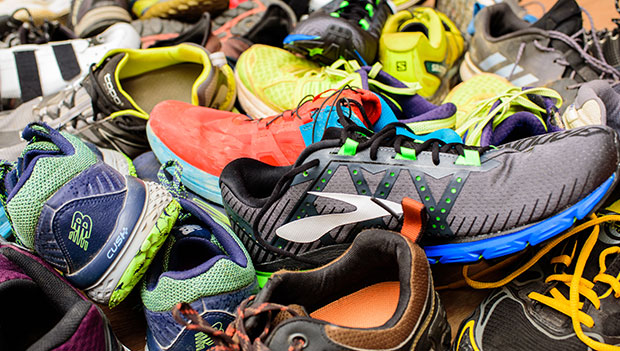
As runners, we often focus on training schedules, nutrition, and recovery routines to enhance our performance and prevent injuries. However, one crucial aspect that sometimes gets overlooked is the condition of our running shoes. Regularly changing your running shoes is essential for maintaining optimal performance, preventing injuries, and ensuring a comfortable running experience. In this article, we'll explore why runners should replace their shoes regularly and provide guidance on when and how to do so.
Why Change Your Running Shoes?
1. Cushioning and Support Degradation: Over time and with repeated use, the cushioning and support systems in running shoes start to break down. This can lead to reduced shock absorption and stability, increasing the risk of impact-related injuries such as shin splints, stress fractures, and joint pain.
2. Loss of Traction: The outsole of running shoes gradually wears down with each stride, resulting in diminished traction and grip on various surfaces. This can compromise your stability and increase the likelihood of slips and falls, especially when running in wet or slippery conditions.
3. Changes in Foot Mechanics: As running shoes wear out, they may lose their original shape and structure, altering the way they interact with your feet. This can affect your running biomechanics and lead to discomfort, blisters, or other foot-related issues.
4. Microbial Growth and Odor: Moisture from sweat and environmental factors can create an ideal breeding ground for bacteria and fungi inside your shoes. Over time, this can lead to unpleasant odors, skin irritations, and even infections if not addressed promptly.
Signs It's Time to Replace Your Running Shoes:
1. Visible Wear and Tear: Inspect the midsole, outsole, and upper of your shoes for signs of excessive wear, including compression lines, flattened cushioning, and peeling or fraying materials.
2. Decreased Comfort: If your shoes no longer feel as comfortable or supportive as they once did, it's a clear indication that they may have reached the end of their lifespan.
3. Increased Discomfort or Pain: Persistent discomfort, pain, or new aches during or after running could be a sign that your shoes are no longer providing adequate support or cushioning.
4. Changes in Performance: If you notice a decline in your running performance, such as decreased speed, endurance, or agility, worn-out shoes could be a contributing factor.
How Often Should You Change Your Running Shoes?
While there's no one-size-fits-all answer, a general rule of thumb is to replace your running shoes every 300 to 500 miles (480 to 800 kilometers) or every 6 to 12 months, whichever comes first. However, several factors can influence the lifespan of your shoes, including your body weight, running style, terrain, and shoe type.
Tips for Extending the Lifespan of Your Running Shoes:
1. Rotate Between Multiple Pairs: Alternating between two or more pairs of running shoes can help distribute the wear and tear more evenly and extend the lifespan of each pair.
2. Proper Maintenance: Clean your shoes regularly to remove dirt, debris, and sweat that can contribute to wear and odor. Avoid machine washing or drying your shoes, as this can damage the materials and affect their performance.
3. Store Them Properly: When not in use, store your running shoes in a cool, dry place away from direct sunlight to prevent premature deterioration.
4. Listen to Your Body: Pay attention to how your body feels during and after running. If you experience persistent discomfort, pain, or changes in performance, it may be time to invest in a new pair of shoes.
Conclusion:
Regularly changing your running shoes is a simple yet crucial aspect of maintaining a safe and enjoyable running experience. By monitoring the condition of your shoes and replacing them when necessary, you can reduce the risk of injuries, improve comfort and performance, and prolong the lifespan of your footwear. Prioritize the health and well-being of your feet by investing in high-quality running shoes and giving them the care and attention they deserve. Your feet will thank you for it on your next run.
Check Out The Latest In Running Shoe Deals on Amazon
By clicking on the product links in this article, we may receive a commission fee at no cost to you, the reader. Sponsorships and affiliate commissions help support our research so we can help you find the best products. Read full affiliate disclosure here.
Why Trust Us?
ACTIVE.com's editorial team relies on the knowledge and experience of fitness and wellness experts including competitive athletes, coaches, physical therapists, nutritionists, and certified trainers. This helps us ensure the products we feature are of the highest standard. Collectively, the team has spent countless hours researching equipment, gear, and recovery tools in order to create the most accurate, authentic content for our readers. Customer satisfaction is also a key part of our review process, which is why we only feature products that are highly rated.
Get ACTIVE on the Go


Couch to 5K®
The best way to get new runners off the couch and across the finish line of their first 5K.
Available for iOS | Android




Discuss This Article